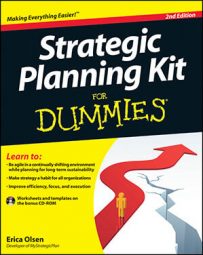Strategic market segmenting can be confusing and more difficult than it needs to be. Remember, there’s no right or wrong way to segment your market. Segmenting requires creativity. Take a shot at creating segments that make sense to you and your business situation. You can always revise your segments at a later date.
Market segmentation by benefits
Benefit segmentation is based on dividing customers based on their needs. This process is also called needs-based segmentation. Simply put, you’re trying to solve a need for a customer. Why not group together all the customers who have the same need?
Some marketers argue that using benefit segmentation is the only way to segment a market because people differ only when it comes to paying you for your product based on the benefits your product provides. However, this type of segmentation may not work for your organization, or it may not be as straightforward. Researching your market can provide some insight on how you can segment based on benefits.
Netflix, an online streaming or home-delivery DVD rental service, divides its customers into three groups based on needs. Group one needs the convenience provided by free home delivery. Group two consists of film buffs who want to be able to access any movie possible. Group three wants the benefit of cheap rentals — they’re the bargain hunters who want to watch a bunch of movies for less than $20 per month.
Market segmentation by descriptors
Descriptors are customer characteristics that are significant enough to divide your market. You don’t use all the descriptors, but you may use one or two together from the following list:
Behavioral: Grouping customers by product usage (light, medium, heavy users), brand loyalty (none, medium, high), and type of user
Decision makers: Grouping customers based on who decides to purchase your product
Demographic: Grouping customers by age, income level, gender, family size, religion, race, nationality, primary language, and so on
Distribution: Grouping customers based on where they go to purchase your product, such as in store, online, or through the catalog
Geographic: Grouping customers by area, such as regions of the country or state and urban or rural
Psychographic: Grouping customers into cultural clusters, social sets, lifestyle, and personality type
E*TRADE, an online brokerage and bank company, segmented its markets in two ways:
The company looked at behavioral descriptors, such as usage. It found a large customer segment of day traders who wanted inexpensive and fast trades. E*TRADE developed quick-trade products and bulk pricing to serve this market.
The company looked at demographic descriptors, specifically income. Through market research, the company discovered that the group of people with $5,000 to $50,000 to invest was a fast-growing segment that was underserved.
Through these descriptors, E*TRADE developed tools to enable the company to profitably serve these customers.

